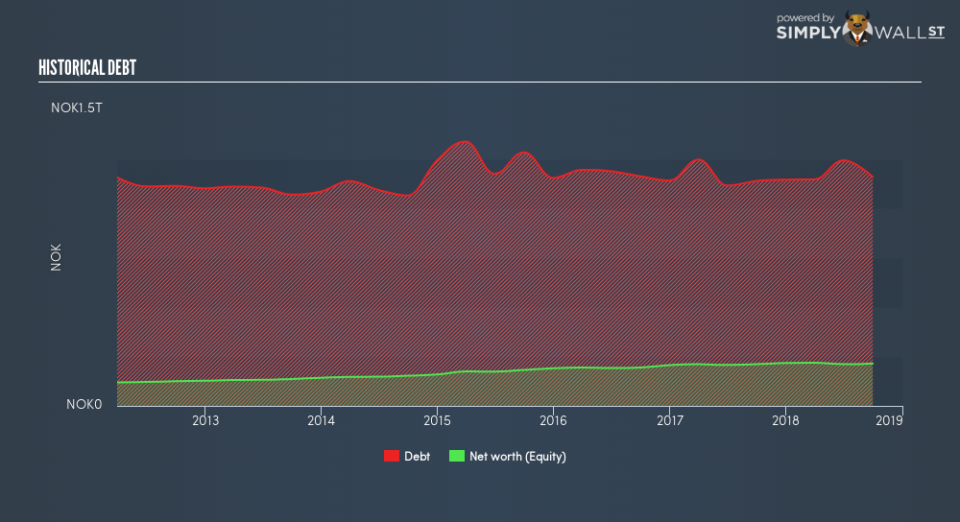Have You Considered These Important Risk Metrics For DNB ASA (OB:DNB)?

A risk DNB ASA (OB:DNB) faces as a bank is bad loans, also formally known as “credit risk”. With a øre242b market capitalisation, it falls in the large, commercial bank category. In the last recession, large banks like JP Morgan Chase, Bank of America and Wells Fargo Bank lost billions of dollars in shareholder equity as their risky lending portfolios were exposed to a tumultuous credit market. The faith of investors in what were once considered blue-chip stocks were undermined. Since the level of risky assets held by DNB impacts the attractiveness of the bank as an investment, I will take you through three metrics that are insightful proxies for risk.
View our latest analysis for DNB
How Much Risk Is Too Much?
DNB’s operations expose it to risky assets by lending to borrowers who may not be able to repay their loans. Loans that cannot be recovered by the bank are known as bad loans and typically should make up less than 3% of its total loans. When these loans are not repaid, they are written off as expenses which comes out directly from DNB’s profit. Since bad loans only make up 1.68% of total assets for the bank, it exhibits prudent bad debt management and faces an industry-average risk of default.
Does DNB Understand Its Own Risks?
DNB’s understanding of its risk level can be estimated by its ability to forecast and provision for its bad loans. If it writes off more than 100% of the bad debt it provisioned for, then it has inadequately estimated the factors that may have added to a higher bad loan level which begs the question – does DNB understand its own risk? With an extremely low bad loan to bad debt ratio of 36.62%, DNB has significantly under-provisioned by -63.38% which is well below the appropriate margin of error. This may be due to a one-off bad debt occurence or a constant underestimation of the factors contributing to its bad loan levels.
How Big Is DNB’s Safety Net?


DNB borrows money in many different forms to lend back out. Customer deposits are the least risky form of borrowing as they are less volatile in terms of interest rate paid and amount available. Generally, the higher level of deposits a bank retains, the less risky it is deemed to be. DNB’s total deposit level of 39% of its total liabilities is below the sensible margin for for financial institutions which generally has a ratio of 50%. This means the bank’s safer form of borrowing makes up less than half of its liabilities, indicating riskier operational activity.
Next Steps:
Relative to the liabilities of the company, DNB’s safer form of borrowing is unenviably low. In addition to this, its mediocre management of bad debt could negatively impact its cash flows. These risk metrics indicate that its operational risk management could be improved on in order to give investors higher conviction of the business. Today, we’ve only explored one aspect of DNB. However, as a potential stock investment, there are many more fundamentals you need to consider. I’ve put together three relevant aspects you should further examine:
Future Outlook: What are well-informed industry analysts predicting for DNB’s future growth? Take a look at our free research report of analyst consensus for DNB’s outlook.
Valuation: What is DNB worth today? Has the future growth potential already been factored into the price? The intrinsic value infographic in our free research report helps visualize whether DNB is currently mispriced by the market.
Other High-Performing Stocks: Are there other stocks that provide better prospects with proven track records? Explore our free list of these great stocks here.
To help readers see past the short term volatility of the financial market, we aim to bring you a long-term focused research analysis purely driven by fundamental data. Note that our analysis does not factor in the latest price-sensitive company announcements.
The author is an independent contributor and at the time of publication had no position in the stocks mentioned. For errors that warrant correction please contact the editor at editorial-team@simplywallst.com.

